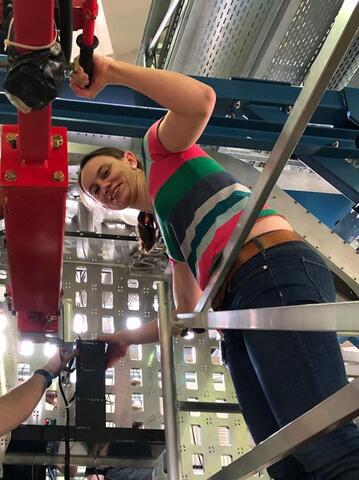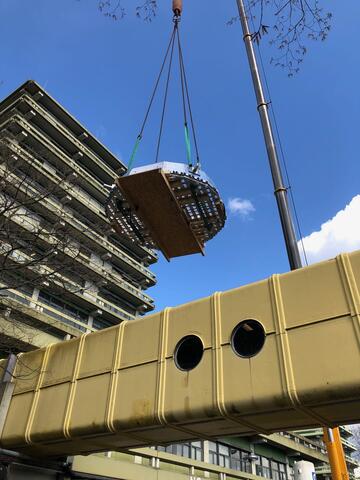Workshop „Physics Opportunities with Proton Beams at SIS100” was held in Wuppertal
PANDA meetings
04/03-08/03 2024 CM 24/1 in Münster
24/06-28/06 2024 CM 24/2 at GSI
25/06-26/06 2024 FEE/DAQ Workshop
04/11-06/11 2024 CM 24/3 at GSI
05/03-07/03 2025 WS at GSI
16/06-20/06 2025 CM 25 in Uppsala
R&D for the PANDA Barrel DIRC
M. Patsyuk for the PANDA Cherenkov Group
PA-PRO-2013-001.pdf
(1.18 MB)
N/A
The PANDA experiment at the new Facility for Anti-proton and Ion Research in Europe (FAIR)
at GSI, Darmstadt, will study fundamental questions of hadron physics and QCD using high intensity
cooled anti-proton beams with momenta between 1:5 and 15 GeV/c. Efficient Particle
Identification (PID) for a wide momentum range and the full solid angle is required for reconstructing
the various physics channels of the PANDA program. Hadronic PID in the barrel region
of the detector will be provided by a DIRC (Detector of Internally Reflected Cherenkov light)
counter. The design is based on the successful BABAR DIRC with important improvements,
such as focusing optics and fast photon timing. A detailed detector simulation is performed using
Geant. A reconstruction algorithm was developed to quantify the performance of different design
options in terms of single photon Cherenkov angle resolution and photon yield. Several geometrical
improvements, including different radiator geometries and optics, were tested in particle
beams at GSI and CERN. In this contribution simulation and reconstruction, the design options,
and performance of the detector prototype will be discussed.
at GSI, Darmstadt, will study fundamental questions of hadron physics and QCD using high intensity
cooled anti-proton beams with momenta between 1:5 and 15 GeV/c. Efficient Particle
Identification (PID) for a wide momentum range and the full solid angle is required for reconstructing
the various physics channels of the PANDA program. Hadronic PID in the barrel region
of the detector will be provided by a DIRC (Detector of Internally Reflected Cherenkov light)
counter. The design is based on the successful BABAR DIRC with important improvements,
such as focusing optics and fast photon timing. A detailed detector simulation is performed using
Geant. A reconstruction algorithm was developed to quantify the performance of different design
options in terms of single photon Cherenkov angle resolution and photon yield. Several geometrical
improvements, including different radiator geometries and optics, were tested in particle
beams at GSI and CERN. In this contribution simulation and reconstruction, the design options,
and performance of the detector prototype will be discussed.





